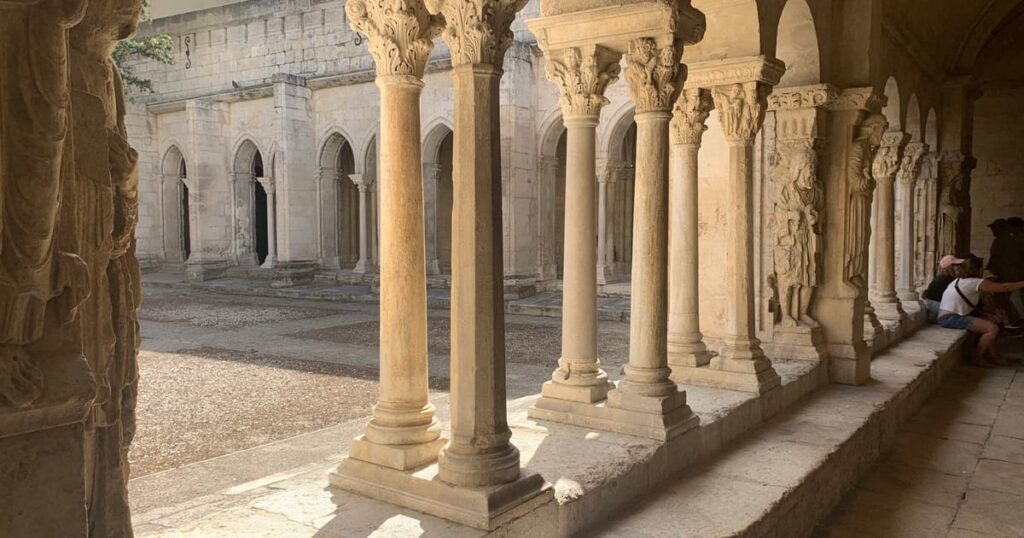Mark Porter is a travel writer and publisher who lives in Cannes.
Arles, FRANCE — Lying on the banks of the river Rhône, at the northern edge of wild and beautiful marshland, Arles — the sleepy capital of Caesar’s France — hosts what is arguably the world’s greatest photo exhibition every summer: Les Rencontres d’Arles. And with exhibits crammed into every available corner, even just a casual stroll around the sunbaked town offers more than anyone could wish for.
Running until the end of September, Les Rencontres comprises 45 exhibitions — as well as a large space in the ancient vaults of the Eglise des Frères Prêcheurs that’s brimming with new discoveries — all spread across town, from its Roman crypts and churches to its fringe venues, and even a branch of the Monoprix supermarket chain.
Arles has a long connection with the visual arts. Dutch painter Vincent Van Gogh spent time here with French artist and close friend Paul Gauguin, and it was here that he lost his ear — as well as his mind. If Arles looks somehow familiar on first sight, it’s probably because of Van Gogh.
And since its inception in 1970, Les Rencontres has been central to local life throughout summer, proving such a success that others have followed suit. But it is the variety here that’s astonishing — it is part of the appeal — as directors Christoph Wiesner and Aurélie de Lanlay deliberately search the far reaches of the photographic world to put together an eclectic view.
And if there is a central focus to this year’s exhibition, it is probably diasporas, displacements and fringe movements — a salient theme scattered across the festival’s artistic offering.
Perhaps the beating — if not the bleeding — heart of this year’s event is “Ne m’oublie pas” (Don’t forget me), which highlights France’s postcolonial angst as seen through the prism of 700 passport-style photographs of mostly North African immigrants, all taken as they arrived in the port of Marseille to forge new lives in the land of the colonizers.
The collection was collated by Jean-Marie Donat from the Studio Rex archives — a photographic agency founded near Marseille in 1933 by Armenian immigrant Assadour Keussayan. Keussayan assiduously photographed fellow arrivés, capturing their fearful optimism and grim determination as they looked ill at ease in their Sunday best.
There are no names or dates for these passport people. Nor any of their personal histories offered. They have been rendered invisible by history. But the very existence of the photographs shapes a memorial bridge across the two shores of the Mediterranean, over a rumbling geopolitical fault line.
Offsetting this powerful essay on deracination, around the corner lies the Eglise Sainte-Anne, offering a breather with some contemporary Nordic feminism in “Søsterskap” (Sisterhood) — a documentary and conceptual attempt by 17 different artists, conveying what it is to be part of a Nordic sorority. Or, one could choose to take a quick look at America’s pioneer transvestites from the 1960s, a secretive sodality captured on Polaroid.
In direct contrast to all this, there is the oeuvre of Peruvian artist Roberto Haurcaya who spent two years in the Amazonian jungle, wrapping 30-meter reels of film around trees and allowing them to develop overnight, then using the muddy river water to process the film. The technique captures the jungle’s pulsing nighttime movement, imparting a ghostly quality, while also reminiscent of the subdued beauty of Japanese silkscreens.
There is also local color to admire at the exhibition, with the late filmmaker Agnes Varda’s photographic portrayal of “Sète,” her adoptive home, and delightful behind-the-scenes snapshots from her groundbreaking 1955 film “La Pointe Courte.” This is homage to the fishing port, capturing Varda’s friends jousting on boats and dockside flaneurs in all their mid-century glory and innocence — unposed snapshots of a bygone era.
Director Wim Wenders does something similar, going behind the scenes of his own work in Hamburg and Paris, capturing images of actors Dennis Hopper and Bruno Ganz during the filming of his 1977 movie “The American Friend.” And as Ganz’s character takes Polaroids of himself throughout the film, Wenders foretells the selfie here, the future age’s narcissistic obsession.
In Arles, one can see the camera as spy, as well as the camera as imitator of painted art, highlighting the immense range of the lens — though, in the latter case, both lens and brush conspire to create something even Van Gogh would, undoubtedly, have admired.
And no one captures the mix of brush and lens better than Eva Nielsen and curator Marrien Derrien’s portrayal of the salt marshes of Camargue. Through the use of collage and paint, they convey a sense of abandonment and desolation with an original beauty that, again, harkens back to the Japanese silkscreen, the fractured landscape resembling a painter’s palette.
And finally, visitors should look at the work of New York painter and photographer Saul Leiter, who probably best combines the two arts with a sensational color sensibility and compositional inspiration. A must-see, offering a peek into something private and intimate. Leiter presents the viewer with a stolen moment in time — unlike Arles itself — which remains, as ever, a still point in a turning world.

